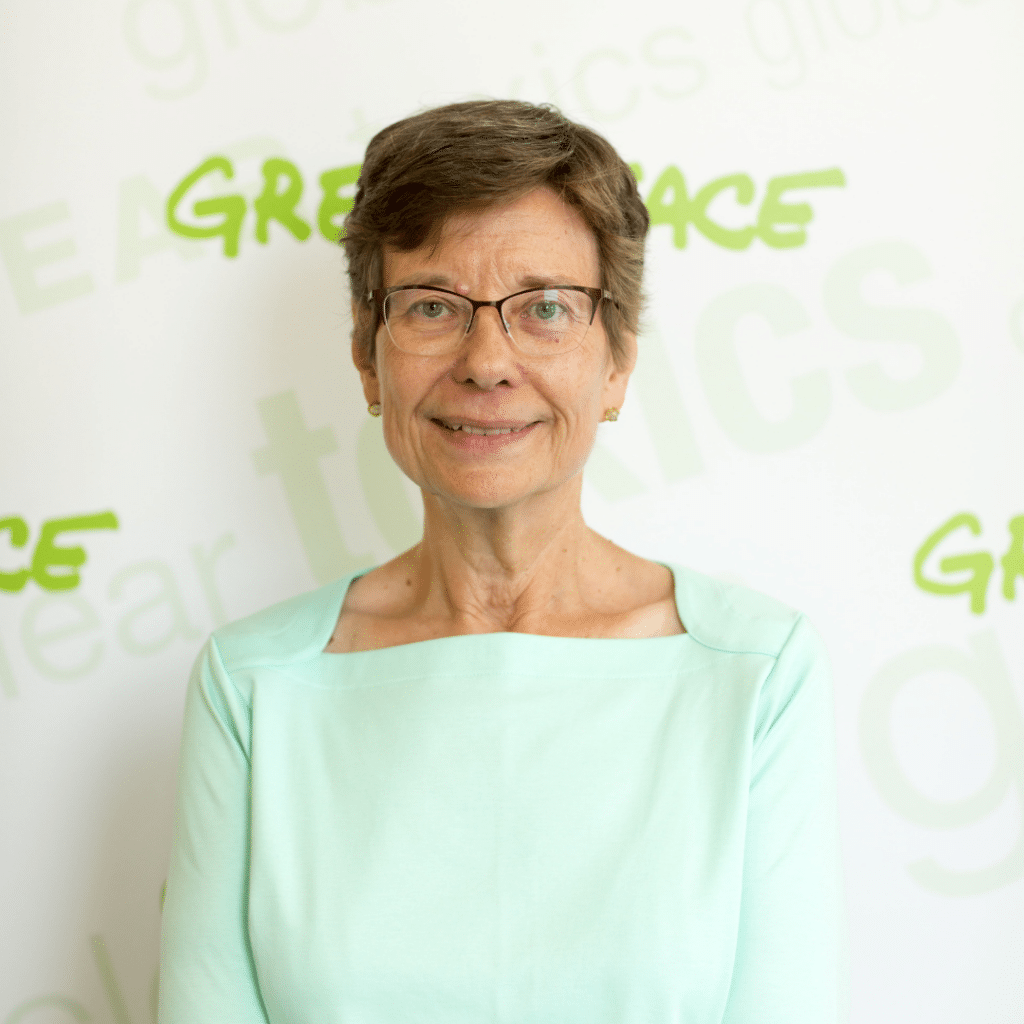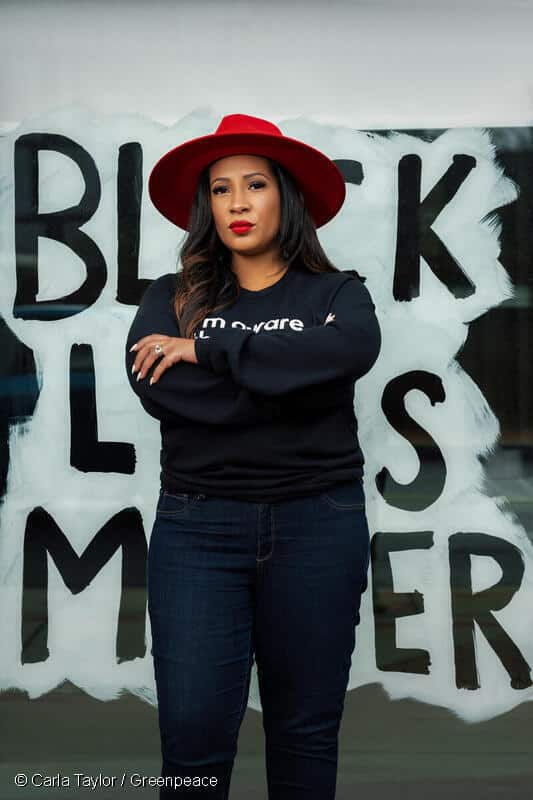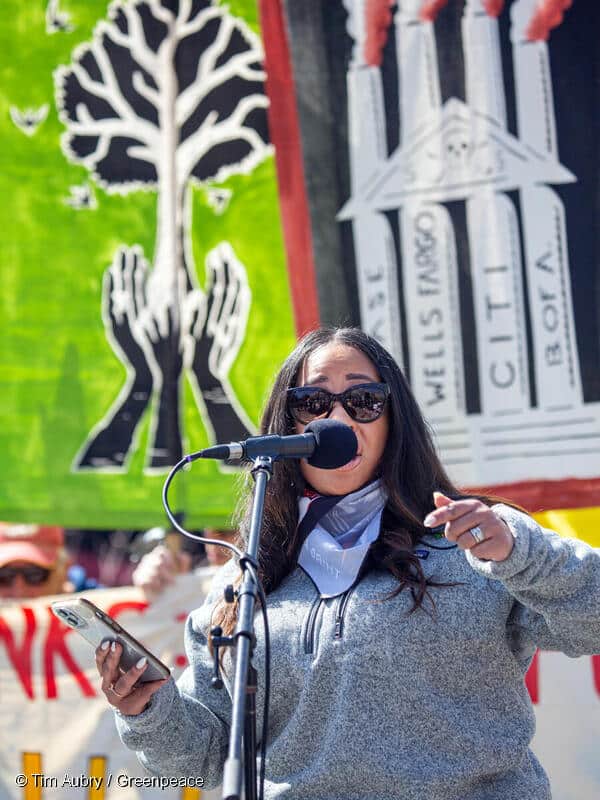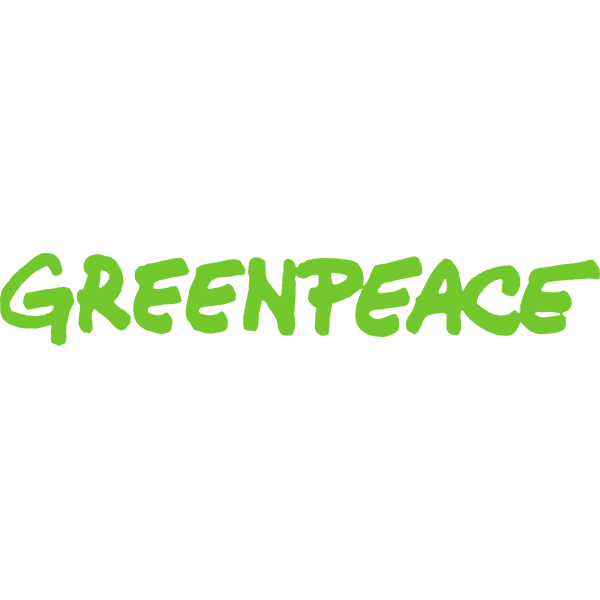
Advancing Racial Justice from Within
By Liz Gilchrist
Liz Gilchrist sits as the Greenpeace Fund Board Chair and has served across Greenpeace USA’s various boards for the past 17 years. In this blog piece, she reflects on her career and how Greenpeace has worked internally to advance diversity and racial justice, most recently marked by the appointment of Ebony Twilley Martin as sole Executive Director of the organization.
When I was approached about writing a blog on how Greenpeace Boards in the U.S. have worked to be more diverse, I hesitated. I wasn’t sure whether I had the expertise to write on the subject, particularly as a long-serving white board member. But looking back over the 17 years that I’ve spent, first as a member of the Greenpeace, Inc. board, and now as a member of the Greenpeace Fund board, I can see how beneficial taking a moment to reflect on what has worked and what hasn’t can be in helping us chart the course to a greener and more just future.
The boards of legacy green organizations started over 50 years ago when the world was very different. Greenpeace was founded in 1971 by five white men, and that origin shaped many of the norms of the organization, but we are actively working to change at every level. Today, Greenpeace USA pushes for a world that prioritizes people over profit and embeds racial justice into everything we do.

Greenpeace USA now looks completely different than it did even 15 years ago when people of color made up 24% of staff. Today people of color make up 54% of staff, with 45% of leadership positions being held by people of color. Additionally, as Ebony Twilley Martin takes the helm this month as Executive Director, Greenpeace USA is now the first legacy environmental organization led solely by a Black woman. This is historic.
While we have made substantial gains towards our goals of diversity, equity, and inclusion, we know that the journey toward justice is a process, not a destination.
The Boards prioritized this work internally because when communities of color look to Greenpeace, we want them to see themselves in it, and that includes the Boards of Directors. Over the years, we have had many members of color on our boards who made valuable contributions to the work. However, recruiting board members from various backgrounds and perspectives alone is not enough.
With my colleague Jakada Imani, the first Black chair of the Greenpeace, Inc. board, and then-Executive Director Annie Leonard, we crafted a new vision for what board leadership could look like that closely aligned with the justice vision that leadership had for the organizations as a whole.
So, what did we do to get to where we are today, having moved from majority white boards with 13% members of color in 2010 to a current membership that is 85% people of color? Two things stand out above the rest in helping us reflect the world we want in the Boards.
First, we stopped looking only at our own networks for board members, for a majority white board will have majority white networks. Ebony has been instrumental in helping recruit Black board members through her connections, leaders in their own fields but equally passionate about Greenpeace’s mission. We have also expanded the scope of our recruitment efforts by reaching out to allies and community groups with whom we have worked and partnered.
Second, we had to change the way we worked together. Under Jakada’s powerful leadership of Greenpeace, Inc. Board, we instituted many practices in our discussions with the Boards and decision-making that are carefully attuned to the racial dynamics of power among ourselves and between us as board members and the communities that our organizations work with.

Serving as a member of Greenpeace Boards has been an almost two-decade long pleasure of mine. But no wins of the organizations have meant as much to me as the changes we’ve made to who leads these organizations: at the senior leadership level, at the executive level, and at the board of director level. I am now the last of the “old guard” on the boards and I’m excited to exit and make space for new leadership.
This work is bigger than myself; bigger than all of us. Racial justice doesn’t just happen overnight, it needs to become the focus and center of everything we do to advance our mission. Simply put, we cannot tackle the climate crisis without tackling racial injustice, and for environmental organizations, it is clear that we cannot create the change we want in the world without changing ourselves.
